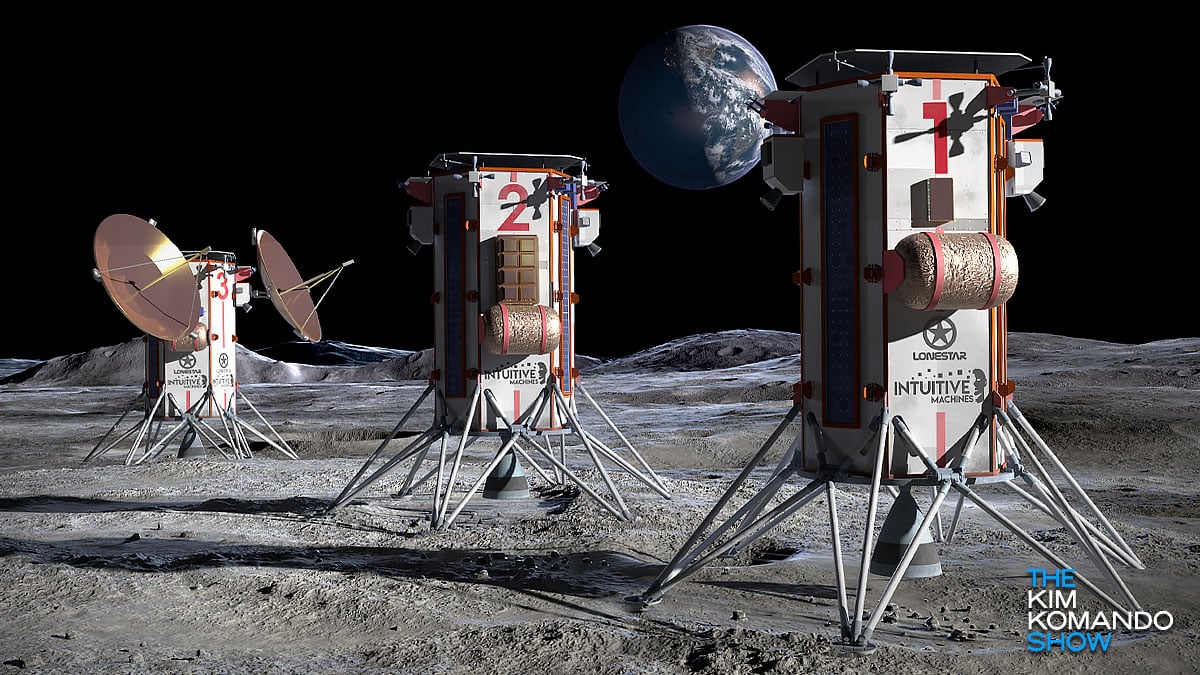Where’s the safest place to store data? If you said “the cloud,” go a little higher. Nope, higher than that.
The ultimate backup is literally out of this world. I recently chatted with Chris Stott, CEO of a Florida-based startup called Lonestar. Alongside NASA, Lonestar is about to send backup servers to the moon. This is so fascinating to me, and I thought you’d like to hear more about it, too.
Not your average storage unit
Here on Earth, we create 2.5 quintillion bytes of data every day. That’s equivalent to a million brand-new MacBook Pros full of data every 24 hours. Phew!
So, why put it all on the moon? Chris says there’s no better place.
“It’s a beautiful, stable platform. We’re just far enough away that we can stay in contact 24/7, but we’re far enough away to make it really good on encryption and cybersecurity.”
Backing up is so moon-dane
When we store things in the cloud, they’re backed up to soccer-field-sized warehouses full of servers. These servers are safer than your laptop, definitely, but they’re still susceptible to all sorts of earthly damage. Think natural disasters, theft and war.
The backups on the moon are a redundancy in case things here at home go really, really bad.
“You’ll still store your data here, but you’ll want to keep it on that lunar cloud. All we’re doing is transferring that cloud out to the moon.” How’s that for an added layer of protection? “Lunar cloud!” Love that.
What about disasters on the moon?
The biggest concern is a massive solar event, but there’s a plan for that, too. “We get warnings when the sun sends a flare our way, and we literally batten down the hatches and depower the equipment,” Chris says. “The charged protons wash through everything, and we power back up on the other side.”
Oh, and there’s also a plan to protect against meteorites crashing into the moon, which happens fairly often. Those are all those pockmarks you see when the moon is extra-visible.
An entire network of lava tubes also exists up there. “Our eventual goal is to move below the surface into the massive tunnels and lava tubes that are there.”
Have data, will travel
OK, now that we’re sold on how safe the moon is, how does our data get up there?
Chris is working with a Houston-based company called Intuitive Machines to get the first mission going in February. They’re building special lunar landers that will launch on a Falcon 9 rocket with the help of Elon Musk’s company, SpaceX.
It’s a moon–u-mental task
As you’d expect, you need a heck of a lot of permission to do this. According to Chris, building the rockets is the easy part. It’s the red tape that gets a little sticky.
“Space is the most regulated of all human activities,” he says. “When you’re putting anything into space, you have to be licensed in terms of the [radio] spectrum you use and also have permission to launch and operate.”
In 1967, the UN came up with the Outer Space Treaty that outlines everything you can and can’t do on the moon. There are strict rules around equipment, disposal, and the kinds of materials and fuel you can use. Chris says the treaty is a fascinating read. I’ll take his word for it.
What’s going to space first?
Yeah, I had to ask — and I’m glad I did!
“We have to do something that is meaningful, so we’re sending the Declaration of Independence,” Chris says. “Then the first documents we’re pulling back are the Constitution and the Bill of Rights.” How cool is that?
Now, anytime I mention the moon, someone’s guaranteed to drop me a comment along the lines of, “Oh, Kim, the moon landing was obviously fake.” If you haven’t noticed, the moon is still up there. It didn’t land anywhere. (I heard you laugh!)
🌗 This is such a great story! Don’t keep it to yourself — share it and “launch” it to friends and fam. They’ll think you’re so smart!

